A62-002. Domestic Tour with Wife and Daughter: 2012 Summer Tour to East China (D1-3)
yuejianglou
Yuejiang Tower is adjacent to the Yangtze River and is located on the top of Lion Mountain. The mountain height is 78 meters high and the building height is 52 meters. The main construction area of Yuejiang Tower is about 4000 square meters. The exterior has 4 floors and 3 floors in darkness, totaling 7 floors. It is together with Wuhan Yellow Crane Tower, Yueyang Tower, and Nanchang Tengwang Pavilion are called the four famous buildings in Jiangnan.
In 1360 AD, Zhu Yuanzhang, the founder of the Ming Dynasty, commanded 80,000 troops in Lulong Mountain and defeated Chen Youliang's 400,000 troops, laying the foundation for the Ming Dynasty to establish Nanjing as the capital of Nanjing. After Zhu Yuanzhang proclaimed himself emperor, in 1374 AD, he named Lulong Mountain Lion Mountain, issued an edict to build Yuejiang Tower, and personally wrote "Yuejiang Tower". He also ordered each of the literary officials to write an article "Yuejiang Tower". The book was written by the Grand Scholar Song Lian as the best and was later selected into "Guanzhi Ancient Wen". For more than 600 years, Although two "Yuejiang Tower Notes" have been passed down to the world, due to various reasons, the building was never built.
In 1997, the Nanjing City government officially approved the construction of Yuejiang Tower. Construction officially started in February 1999, was completed in September 2001 and opened to the public.The ticket price for Yuejiang Tower Scenic Area is 40 yuan/person.
yuejianglou
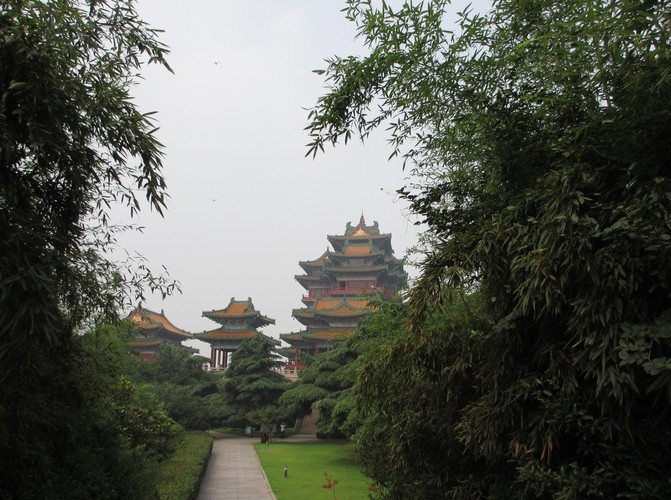
yuejianglou

Porcelain paintings of Zheng He's voyages to the West in Yuejiang Tower

In the center of the hall on the third floor of Yuejiang Tower, there is a huge porcelain painting of Zheng He's voyages to the West. The painting is 12.8 meters high and 8 meters wide. The picture consists of twelve parts. It is colorful and majestic. It provides a panoramic description of the glorious history of Zheng He's voyages to the West from 1405 to 1433, including building precious ships, scientific navigation, conquering the ocean, peaceful diplomacy, good neighborliness and friendship, spreading civilization, equal economy and trade, cultural exchanges, and the local customs of Western countries.
Xuanwu Lake

Xuanwu Lake
Xuanwu Lake was named Sangbo in ancient times. It is located in Nanjing. It is the largest royal garden lake in China. It is the only remaining royal garden in Jiangnan in contemporary times. It is one of the three famous lakes in Jiangnan. It is the largest urban park in Jiangnan and is known as the "Pearl of Jinling".
Xuanwu Lake is about 2.8 kilometers long from north to south and 1.9 kilometers long from east to west. Fish farming and lotus flowers are planted in Xuanwu Lake to cultivate corresponding aquatic and terrestrial plants.Xuanwu Lake Park is a large open-plan park without tickets. There are battery cars around the lake, and the fare is 10 yuan/person.
Xuanwu Lake Mingcheng Wall
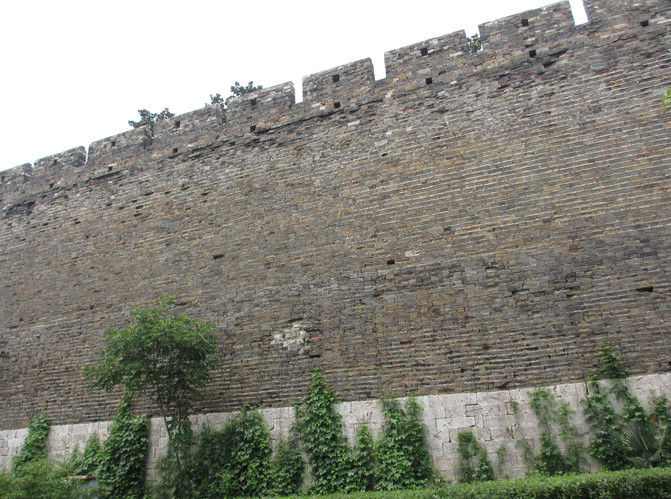
Xuanwu Lake Xuanwu Gate

Xuanwu Gate is a landmark building in Xuanwu Lake Park.
Nanjing library

After lunch, the tour guide took her across a road to the Nanjing Library. The appearance of the Nanjing Library is quite elegant. The tour guide also explained that in Nanjing, provincial-level units are generally called "Nanjing ××". The Nanjing Library is actually the Library of Jiangsu Province, and city-level units are generally called "Jinling ××."
Presidential Palace Gate

presidential palace
The Presidential Palace is located at No. 292 Changjiang Road, Nanjing. It is now China's largest modern history museum. The Presidential Palace has a history of more than 600 years. In the early Ming Dynasty, it was the Mansion of Marquis Guidé and the Mansion of King Han. In the Qing Dynasty, it was the Jiangning Weaving Department, Jiangnan Governor's Office, and Liangjiang Governor's Office. When Emperor Kangxi and Qianlong of the Qing Dynasty went to Jiangnan, they used this as "palaces". On January 1, 1912, Sun Yat-sen was sworn in as the Provisional President of the Republic of China and formed the Provisional Government of the Republic of China. On April 23, 1949, the People's Liberation Army liberated Nanjing and captured the Presidential Palace.
The museum covers an area of about 90,000 square meters and is divided into three visiting areas. The central area (central axis) is mainly the National Government, the Presidential Palace and its affiliated institutions; the western area is Sun Yat-sen's temporary president's office, secretariat and West Garden, as well as the General Staff Headquarters, etc.; the eastern area is mainly the former site of the Executive Yuan, stables and East Garden.
My father and mother visited the Presidential Palace during the summer vacation of 1998. At that time, part of the place was still office space for government agencies. Now it has been moved away. The ticket price for the Presidential Palace is 40 yuan/person.
Presidential Palace plaque with the world for the public

Presidential Palace Zichao Building

"Zichao Building" is the main building of the Presidential Palace, located at the northern end of the central axis of the Presidential Palace. This office building was built under the term of Lin Sen, Chairman of the National Government. Lin Sen has the word Zichao and has served as Chairman of the National Government for the longest time, so people are accustomed to call it "Zichao Building". The building started in 1934 and was completed in December 1935. The "Zichao Building" has five floors and six floors in parts. The second floor is the office of the President and Vice President, and the third floor is the meeting room of the National Government.
zhonghuamen Castle

zhonghuamen Castle
Nanjing Zhonghua Gate is the main south gate of Nanjing City. It is located on the north bank of the Qinhuai River. It was originally named Jubao Gate. Zhonghua Gate Castle is the largest existing castle-style barn city in China and the most well-preserved ancient castle with the most complex structure in the world.
Zhu Yuanzhang, the founder of the Ming Dynasty, began to build the Nanjing City Wall in 1366. The south gate was rebuilt on the old site of the south gate of the capital of the Southern Tang Dynasty. It was said that the treasure basin of Shen Wanshan, a rich household in the south of the Yangtze River, was buried under the gate. It was called the "Gate". In 1931, it was renamed "Zhonghua Gate". The Zhonghua Gate is about 118.5 meters wide from east to west, and about 128 meters long from north to south. It covers an area of about 15168 square meters. There are three Jubao Cities, which are connected by four Wuan Gate. The first gate is 21.45 meters high. Each gate has a thousand-pound gate and a double-leaf wooden door that can be activated up and down. Now only the remains of the gate grooves and gate positions are left. There are 13 Tibetan soldiers caves above and below the Wengcheng, and 14 Tibetan soldiers caves under the left and right horse roads. It can store military supplies and ambush soldiers during wartime. It is estimated that it can accommodate 3000 people. Horse paths 11.5 meters wide and 86.1 meters long are built on the east and west sides of the Wengcheng. The horse paths are steep and magnificent, which are fast routes for transporting military supplies to the city during wartime. Generals can also ride horses directly to the city top of the city. This Tibetan military facility. It played a very important role in ancient wars. When there was a strong attack by the enemy, the enemy soldiers could be put into the city gate, then each city gate could be closed, the enemy troops could be cut into three sections, and divided and annihilated, like "catching turtles in a jar."zhonghuamen Castle

Zhonghuamen Castle Horse Road
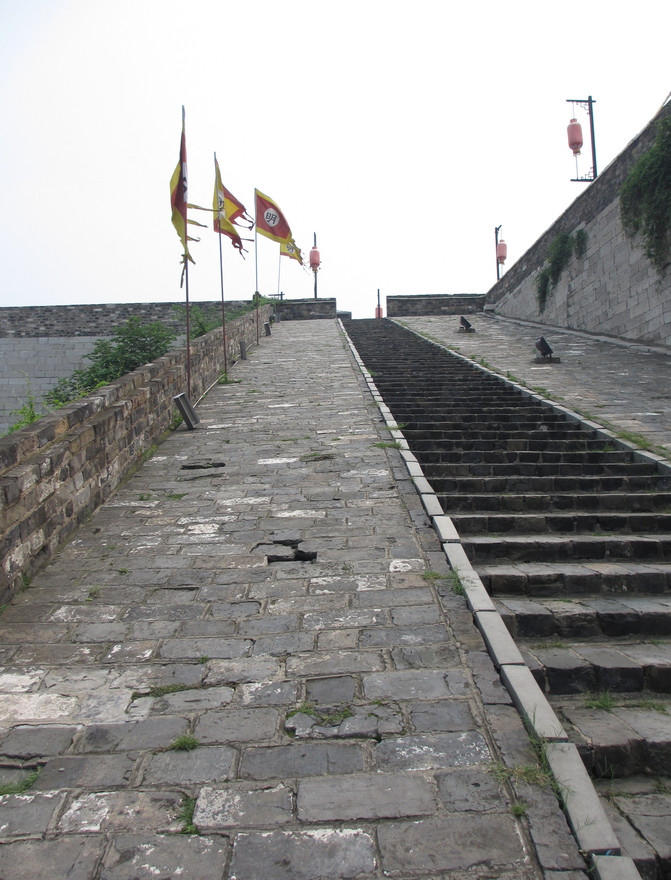
Zhonghuamen Castle Cangbing Cave

Mochou Lake Park Paifang

mochou Lake
Mochou Lake is located in the west of the Qinhuai River in Nanjing. Mochou Lake was called Hengtang in ancient times. Because it was located in Shitou City, it was also called Shicheng Lake. The name comes from a beautiful legend. The park has an existing area of about 58.36 hectares, of which the water surface area is about 32.36 hectares. During the Republic of China, Mochou Lake was listed as the first of the "Forty-eight Scenes of Jinling" with "Mochou Rain".
Mochou Lake Shengqi Building

Shengqi Tower was the place where Zhu Yuanzhang, the founder of the Ming Dynasty, played chess with Xu Da, the King of Sun Yat-sen. It is said that Zhu Yuanzhang, the founding emperor of the Ming Dynasty, established the capital in Nanjing and often played Go here with his minister Xu Da. Once in order to please Zhu Yuanzhang, Xu Da cleverly used chess pieces to place the word "Long Live" on the chessboard. The three words "Shengqi Tower" on the lintel of Shengqi Tower are written by Mei Qizhao, the top scorer in the tenth year of Tongzhi in the Qing Dynasty. The chess tables, wax figures, etc. where Zhu Yuanzhang and Xu Da played chess are displayed upstairs.
Mochou Lake Shengqi Building

Mochou Lake Shengqi Building

Mochou Statue of Mochou Lake

In the lotus pond in the lotus appreciation hall next to Yujin Hall, the former residence of Mochou Nu, a 2-meter-high white marble statue of Mochou Nu, is one of Nanjing's iconic attractions.
The Legend of the Mochou Girl
Mochou was a native of Luoyang, Henan Province. She lost her mother when she was young and lived with her father. She was quiet, smart and studious. She could pick mulberry trees, raise sericulture, weave, and embroider everything. As the neighbor's children studied, she not only learned some words, but also recited a few poems and poems. Mochou also learned from her father the ability to collect medicines and cure diseases. At the age of fifteen, her father unfortunately fell off a cliff and died while picking medicines. Mochou had to sell himself to bury his father because of his poor family. At that time, Yuan Lu was doing business in Luoyang. Seeing that Mochou was simple and beautiful, he sympathized with her, so he helped Mochou take care of his father's affairs and brought her to Jiankang. From then on, Mochou married into the Lu family and became the daughter-in-law of the councilors. After marriage, Mochou and her husband loved each other, and the next year they gave birth to a white and fat son, named Ahou. Although he lived a prosperous life, Mochou often missed his hometown and his father. He only felt happy and smiled when he helped the poor cure diseases. Poor people often said: We have diseases and pain, but when we see Mochou, we have no worries! In the long run, Mochou Nu's name spread.
Yuanwai Lu once served as an official in the Liang Dynasty. One day, Emperor Wu of the Liang Dynasty heard that the peony flowers were blooming in Lu's manor outside Shuimen, so he put on civilian clothes and came to Yuanwai's house to admire the flowers. He saw the peony flowers intertwined like brocade and dazzling like sunset. Emperor Wu of the Liang Dynasty was so shocked that he was intoxicated that he asked Yuanwai: Who planted this flower? Councillor Lu knelt down and replied: This is the fault of his daughter-in-law Mochou. Emperor Wu of Liang couldn't help but feel his heart racing and immediately ordered Mochou to see him. Emperor Wu of Liang couldn't help but be fascinated when he saw Mochou's beautiful appearance. After returning to the palace, he couldn't sleep well and finally came up with a poisonous plan that killed Master Lu. He passed an edict to choose Mochou into the palace as his concubine. When Mochou learned of this, he was furious and angry and determined that he would rather be broken than die in Shicheng Lake. When neighbors around learned of this, they came to the lake to cry and pay homage. They couldn't believe that such a good woman would throw herself into the lake. Some people say they heard Mochou crying late at night, and others say they saw a small boat falling from the sky and carrying Mochou away leisurely... People miss her deeply. In order to commemorate her, Shicheng Lake was renamed Mochou Lake. Emperor Wu of the Liang Dynasty heard the news and felt ashamed, so he wrote "The Song of Water in the River": the water in the river flows eastward, and Luoyang's daughter is named Mochou. Mochou was able to weave silk when he was thirteen, picked mulberry trees in Nanmotou when he was fourteen, married Lu's wife when he was fifteen, and gave birth to a son named Ah Hou when he was sixteen. Lu Jialan's house is made of cinnamon beams, with turmeric and suhexiang in it, twelve rows of gold ribbons on his head, five pieces of silk shoes under his feet, corals hung with mirrors and rotted lights, and flat-headed slaves carried leather boxes. What can I hope for wealth in life? I wish I could marry the king of the East family early.Day3 (July 17)
Participate in a one-day tour of Nanjing by a local travel agency and book online. The adult group fee excluding meals is 180 yuan/person, the children group fee is 50 yuan/person, and an additional 25 yuan/person for a unified lunch reservation.
A. Visit the Nanjing Yangtze River Bridge.
B. Visit Chaotian Palace.
C. Visit Zhanyuan.
D. Qinhuai River cruise ship.
E. Visit Sun Yat-sen Mausoleum.
F. Nanjing Railway Station scattered.
Nanjing Yangtze River Bridge

Nanjing Yangtze River Bridge
The Nanjing Yangtze River Bridge was officially started on January 18, 1960. The railway bridge was completed and opened to traffic in September 1968, and the highway bridge was opened to traffic in December 1968.
The Nanjing Yangtze River Bridge is a large bridge for railways and highways. The railway bridge is 6772 meters long and the highway bridge is 4589 meters long. Ten thousand tons of ships can pass under the bridge. The Nanjing Yangtze River Bridge is the third bridge to cross the Yangtze River after the Wuhan Yangtze River Bridge and the Chongqing Baishatuo Yangtze River Bridge. The bridge across the Yangtze River is the largest of the three bridges.
The Nanjing Yangtze River Bridge consists of an approach bridge, a main bridge and a north and south bridgehead. The main bridge is divided into two floors. The upper layer is a highway bridge. The main bridge is 1577 meters long and has a width of 4 lanes. The lower layer is a railway bridge with a total length of 6772 meters and a width of 14 meters. Laying double tracks, two trains can be opened at the same time; The highway approach bridge is 3012 meters long and 19.5 meters wide. The approach bridge is built with 22 distinctive bridge holes. There is a pair of bridgeheads in the north and south of the bridge, 70 meters high. There are three red flags on each bridgehead, symbolizing the People's Commune, the Great Leap Forward and the general route of the 1950s.
There are 150 pairs of white jade orchids neatly arranged on both sides of the bridge. Whenever night falls, the lanterns will shine and tens of thousands of lights will outline the majestic appearance of the bridge more clearly and charming. The night view of the "Sky Chasm Flying Rainbow" is one of the 40 scenic spots in modern Jinling.
The Nanjing Yangtze River Bridge carries the memories of generations. There are countless bridges on the Yangtze River, but it was an extraordinary achievement to build a bridge on the rolling Yangtze River back then. For another 2 yuan/person, you can go to the Nanjing Yangtze River Bridge Observation Deck.
Nanjing Yangtze River Bridge
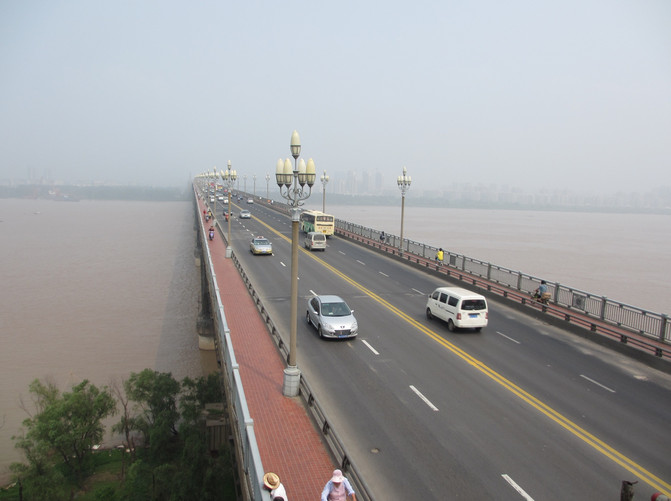
Chaotian Palace Lingxingmen

chaotian Palace
Chaotian Palace is located on Yecheng Mountain on the east side of Mochou Road in Nanjing. It is a towering temple with red walls and green tiles. It is the highest-specification, largest and best-preserved group of palace-style ancient buildings in the Jiangnan area. The name of Chaotian Palace was given by Emperor Zhu Yuanzhang, Taizu in the 17th year of Hongwu of the Ming Dynasty (1385), with the meaning of "worshiping heaven". The existing building was rebuilt in the fifth year of Tongzhi of the Qing Dynasty (1866) and covers an area of about 40000 square meters. The Chaotian Palace is a Confucian Temple in its layout. To the east is the Fuxue, and to the west is the Bianhu Temple.Chaotian Palace is now the Nanjing Museum, and the Confucian Temple in the middle is the Nanjing Confucian Temple. The main architectural layout is generally the same as the Beijing Confucian Temple visited in Beijing during the winter vacation at the beginning of the year.
Chaotian Palace Dacheng Gate

Chaotian Palace Dacheng Hall

zhanyuan

zhanyuan
Zhanyuan is located at No. 208 Zhanyuan Road, Nanjing City. It is the only well-preserved and open royal palace in Nanjing. It has a history of more than 600 years. It was originally the palace given to Xu Da, the first meritorious official of the founding of the country, by Zhu Yuanzhang, the founder of the Ming Dynasty, after he proclaimed himself as emperor. It was the palace of Emperor Qianlong of the Qing Dynasty during his southern tour. The word "Zhanyuan" was inscribed by Qianlong himself. During the Taiping Rebellion Period, it was the palace of Yang Xiuqing, the Eastern King, and Xiao Youhe, the Young West King.
Zhanyuan covers an area of about 20000 square meters. It is also known as the "Four Famous Gardens in Jiangnan" together with Wuxi Jichang Garden, Suzhou Humble Administrator's Garden and Lingering Garden. The Tiger Monument is the treasure of Zhanyuan's town house. It is said that it was given to Xu Da by Zhu Yuanzhang after he proclaimed himself emperor.In Zhao Yazhi's version of "The Legend of the New White Lady", the location of the White Mansion is Zhanyuan.
zhanyuan
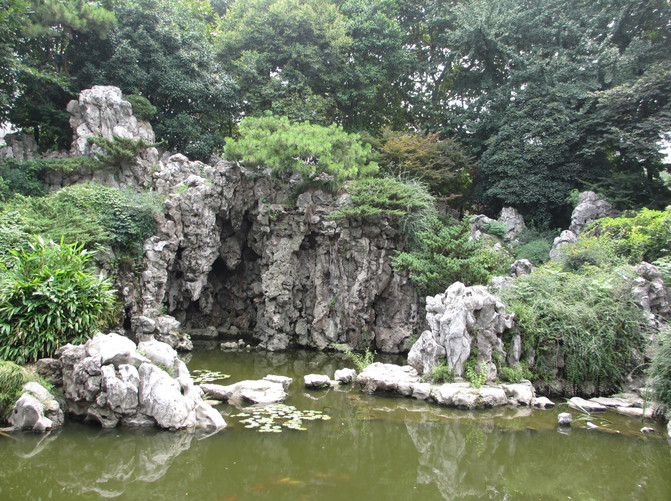
zhanyuan

Qinhuai River Painting Boat

Take a pleasure boat at the bustling Confucius Temple Wharf and cruise the Qinhuai River in the Confucius Temple-Bailuzhou Park section.
Qinhuai River
The Qinhuai River is a tributary on the right bank of the lower reaches of the Yangtze River. The Lishui River and Jurong River merge into the main stream of the Qinhuai River at the northwest village of Fangshandai, Jiangning District, Nanjing. They bypass Fangshan and head northwest to Shangfangmen at the gate of Waiguo City and flow into Nanjing City from Dongshuiguan. It traverses the main city of Nanjing from east to west. In the south, it flows out from Xishuiguan into the Yangtze River. The Qinhuai River basin area is about 2631 square kilometers.Qinhuai River

Boai Memorial Arch of Sun Yat-sen Mausoleum

Sun Yat-sen mausoleum
Sun Yat-sen Mausoleum is the tomb of Sun Yat-sen. It is located at the southern foot of Xiaomao Mountain, the east peak of Zhongshan Mountain in the eastern suburbs of Nanjing. It is built next to the mountain and gradually rises along the central axis from south to north. The entire building complex rises layer by layer according to the mountain, with a magnificent momentum.
The construction of Sun Yat-sen Mausoleum was started in the spring of 1926 and was completed in the summer of 1929. The Sun Yat-sen Mausoleum faces north to south and covers an area of about 80000 square meters. The main buildings include: archway, tomb path, tomb gate, stele pavilion, memorial hall and tomb chamber, etc. Looking down from the sky, Sun Yat-sen Mausoleum is like a "freedom bell" lying flat on a green carpet.
The architectural style of Sun Yat-sen Mausoleum combines Chinese and Western styles. It is very solemn and majestic. It has profound meaning, commemorative functions, and grand momentum. The design is very successful and is known as "the first tomb in the history of modern Chinese architecture."My father has never been interested in the attractions of the mausoleum, and he couldn't help but admire the grandeur of Sun Yat-sen Mausoleum. Strolling through Sun Yat-sen Mausoleum, you have to walk up the long corridor and climb 392 steps. The last steps are getting higher and higher. My daughter walks faster than my father and mother, but does my daughter understand the profound meaning?
Previous Article:Nanjing people look at Nanjing--waiting for the sunset in Yuzui Wetland Park
Next Article:Tour Shijiu Lake with my parents (1)-Fresh and elegant Jiaozan Stone Village
